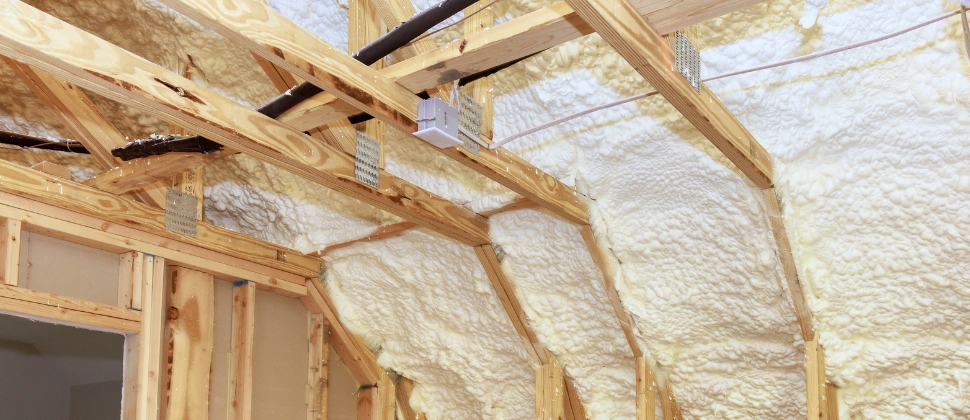Spray foam insulation is gaining popularity for its energy-efficient and versatile qualities. However, despite its effectiveness, the application process is not foolproof. Many DIY enthusiasts and even some professionals fall prey to common mistakes that can compromise the performance and longevity of spray foam insulation. In this comprehensive guide, we'll explore the typical errors made during spray foam application and offer insights on how to avoid them. Whether you're a homeowner attempting a small project or a seasoned contractor, understanding these pitfalls is crucial for achieving optimal results.
1. Inadequate Surface Preparation
One of the most common mistakes in spray foam application is inadequate surface preparation. Whether you're applying spray foam to walls, ceilings, or roofs, proper surface preparation is paramount. Failing to clean and prime the surface can lead to adhesion issues, reducing the effectiveness of the insulation.
Avoidance Tip: Before starting the application process, ensure the surface is clean, dry, and free of dust, debris, or any oily residues. Use a suitable primer to enhance adhesion, allowing the spray foam to form a strong bond with the substrate.
2. Ignoring Temperature and Humidity Conditions
Spray foam application is highly sensitive to environmental conditions, particularly temperature and humidity. Applying spray foam in extreme weather conditions can lead to improper curing and adhesion problems. Ignoring the manufacturer's guidelines regarding acceptable application conditions is a common mistake.
Avoidance Tip: Always check and adhere to the recommended temperature and humidity range specified by the spray foam manufacturer. Installing spray foam in optimal conditions ensures proper expansion, curing, and adhesion, maximizing its insulating properties.
3. Incorrect Mixing Ratios
Proper mixing is critical for the success of spray foam application. Using the wrong ratio of the two components (polyol and isocyanate) can result in incomplete curing, reduced insulation performance, and even structural issues in severe cases.
Avoidance Tip: Invest in high-quality, reliable spray foam kits that provide precise mixing ratios. Carefully follow the manufacturer's instructions and use calibrated equipment to ensure an accurate mix. Deviating from the recommended ratios can lead to costly consequences.
4. Overlooking Protective Gear
Spray foam chemicals can be hazardous if not handled properly. Neglecting the use of appropriate personal protective equipment (PPE) is a serious mistake that can compromise safety.
Avoidance Tip: Always wear the recommended PPE, including gloves, goggles, and a respirator, when handling and applying spray foam. This precautionary measure protects against skin contact, eye irritation, and inhalation of potentially harmful fumes.
5. Neglecting Ventilation
Proper ventilation is crucial during spray foam application to dissipate fumes and prevent the accumulation of volatile organic compounds (VOCs). Neglecting ventilation can lead to health hazards and compromised indoor air quality.
Avoidance Tip: Prioritize ventilation by using exhaust fans or open windows to ensure a constant flow of fresh air during the application process. Adequate ventilation not only protects the applicator but also ensures a safer and healthier indoor environment.
6. Overapplication or Underapplication
Achieving the right thickness is essential for the effectiveness of spray foam insulation. Both overapplication and underapplication can result in suboptimal insulation performance.
Avoidance Tip: Follow the manufacturer's guidelines regarding the recommended thickness for the specific type of spray foam being used. Overapplication can lead to unnecessary material waste, while underapplication may compromise the insulation's thermal resistance.
7. Neglecting Safety Precautions for Overspray
Overspray is an inherent aspect of spray foam application and can result in unintended surfaces being coated. Neglecting safety precautions for overspray, such as masking off areas that should remain untouched, is a common error.
Avoidance Tip: Before commencing the application, carefully mask and cover areas that should not be coated with spray foam. Taking the time to implement proper masking procedures prevents time-consuming and potentially costly cleanup efforts.
Incorporating Genuine Tips from Spray Foam and Coating Contractors
To enhance the authenticity and trustworthiness of this guide, we reached out to experienced Spray Foam and Coating Contractors. These professionals shared insights based on their years of hands-on experience in the field.
Expert Tip: "One of the most crucial aspects of a successful spray foam application is understanding the specific needs of the project. Different environments, surfaces, and intended uses require tailored approaches. Always assess the unique characteristics of the job at hand and choose a spray foam product that aligns with those requirements. This ensures genuine and long-lasting results."
Genuine Examples of Commercial Roof Coating Services
When it comes to large-scale projects, such as Commercial Roof Coating Services, avoiding common mistakes is equally critical. We spoke with experts specializing in commercial applications to provide genuine examples that highlight the importance of precision and attention to detail.
Real-World Scenario: "We recently witnessed the results of inadequate surface preparation during a commercial roof painting project. The team failed to remove old coatings and debris, leading to adhesion issues. The result was a compromised waterproofing barrier and increased vulnerability to leaks. It emphasized the importance of thorough surface preparation to achieve genuine, long-term protection."
Conclusion
Spray foam application can be a rewarding and effective solution for insulating homes and commercial spaces. However, avoiding common mistakes is paramount to ensuring the success and longevity of the insulation. By addressing issues related to surface preparation, environmental conditions, mixing ratios, safety precautions, and application thickness, both DIY enthusiasts and professionals can achieve genuine and reliable results. Incorporating insights from experienced Spray Foam and Coating Contractors and real-life examples of Commercial Roof Coating Services reinforces the authenticity of these tips, providing a trustworthy guide for those venturing into the world of spray foam application.
Furthermore, staying updated on the latest industry trends and technological advancements is essential for maximizing the benefits of spray foam insulation. Regular maintenance and periodic inspections can help identify potential issues early on, contributing to the insulation's overall effectiveness. Additionally, fostering a proactive approach to safety protocols ensures a secure working environment for all involved. In conclusion, embracing a holistic approach to spray foam application, encompassing knowledge, diligence, and continuous improvement, sets the foundation for successful insulation projects and sustainable outcomes.





Comments